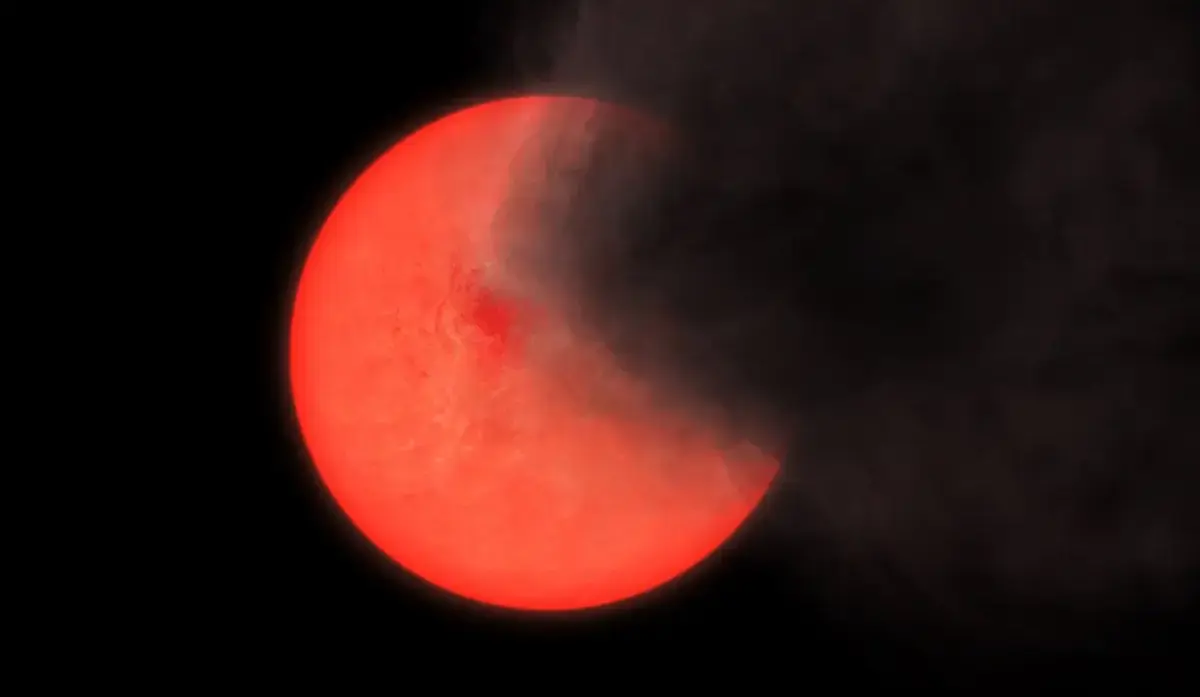Scientists discovered a new type of star
- January 26, 2024
- 0
During a large-scale survey of the sky, astronomers discovered many new variable stars, both young and old. No one expected to see the second one. It turned out
During a large-scale survey of the sky, astronomers discovered many new variable stars, both young and old. No one expected to see the second one. It turned out

During a large-scale survey of the sky, astronomers discovered many new variable stars, both young and old. No one expected to see the second one. It turned out to be a new type of red giant that was previously unknown.
Scientists call all stars whose brightness changes over time variable. The reasons may be different, but they are all temporary. Variability is a feature that occurs at some stages of a star’s evolution. With such changes, astronomers can learn a lot about these objects: mass, size, brightness, temperature, structure, composition and stage of evolution. And it is precisely thanks to periodic stars (for example, classical Cepheids) that it is possible to determine the distance to other stars.
Overall these are interesting objects and several new types of variable stars have been discovered in the last few years. Now another person has joined them.
In 2010, astronomers launched the VVV (VISTA Variables in Via Lactea) survey to find variable stars in the Milky Way’s bulge and disk. In 2016, the search continued by expanding the search area and using a new, more accurate, less noisy photometry database (VVVX). This is the first panoramic infrared survey of any variable sources in the hidden regions of the Milky Way.
An international group of scientists, led by professor Philip Lucas from the University of Hertfordshire (Great Britain), analyzed the data and found 222 variable stars and transient stars. These are mainly novae, protostars, microlensing events, long-period variables and other objects. Many of them were discovered for the first time.
What was unexpected for the study’s authors was the inclusion of a new type of stars – irregular red giants whose brightness sometimes decreases so much that they become “invisible” to our instruments. All 21 objects were discovered in the central region of the Milky Way disk. The study on this subject was published in the journal Monthly Notices of the Royal Astronomical Society.
According to Philip Lucas, at first he and his colleagues were unsure whether these were early stars hiding behind disks of dust and gas that were their ancestors, or ancient stars shedding matter in the final stages of life. After analyzing the spectra of seven objects and comparing the new data with databases of previously collected information, scientists concluded that these are indeed ancient stars.
“These old stars live quietly for several years, even decades, and then completely unexpectedly emit “smoke clouds”. After that, they appear very red and faint for several years, sometimes so much so that we cannot see them at all,” explains the VVV review. Dante Minniti, founder and professor at Andres Bello University (Chile).
All these “old smokers” are located in the central region of the Milky Way, rich in heavy elements. Initial analysis showed that the surface temperature was very low, between 3100 and 4100 Kelvin. It is noteworthy that the decrease in brightness is asymmetrical and lasts at least a year, more often several years. Judging by the color, they are caused by small dust particles.
All this shows that particles from the saturated environment are concentrated in the relatively cold outer layers of these red giants. But scientists do not yet understand how the substance is subsequently expelled, leading to an increase in their brightness.
Source: Port Altele
As an experienced journalist and author, Mary has been reporting on the latest news and trends for over 5 years. With a passion for uncovering the stories behind the headlines, Mary has earned a reputation as a trusted voice in the world of journalism. Her writing style is insightful, engaging and thought-provoking, as she takes a deep dive into the most pressing issues of our time.